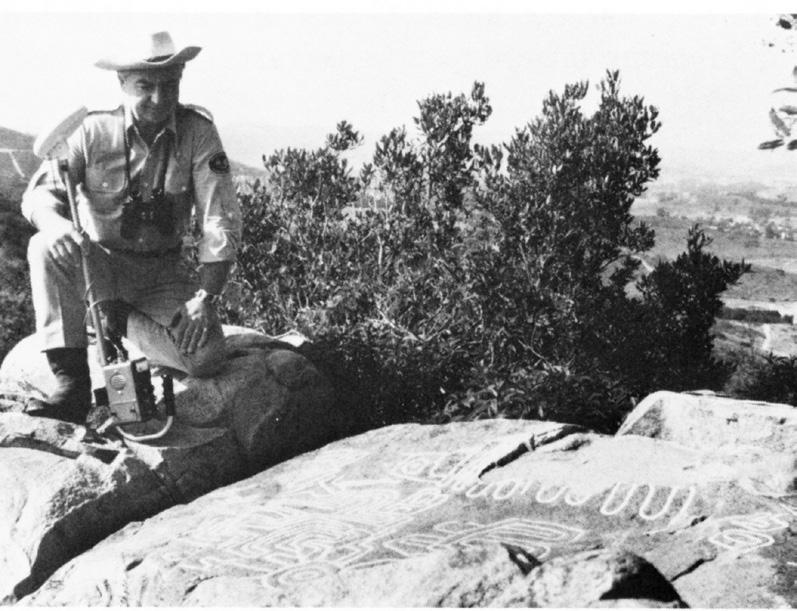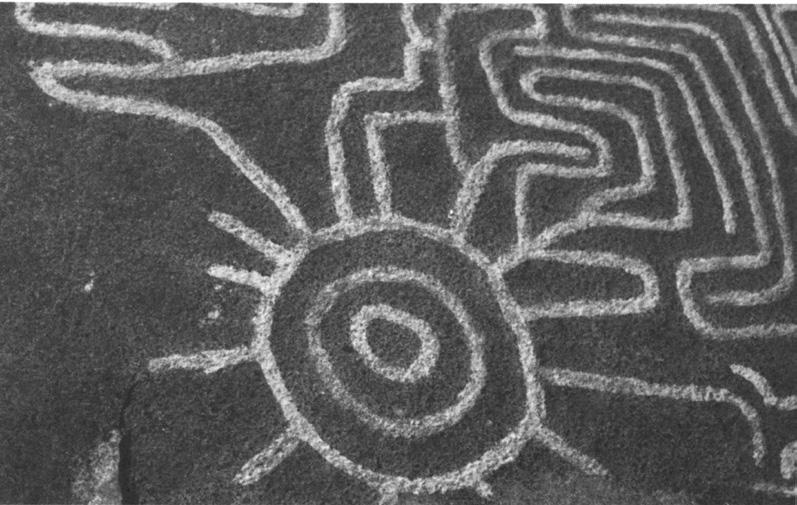
5 minute read
Some Personal Experiences
Before we discuss the various symbols themselves, I’ll relate a few of my own encounters with treasure-hunting signs and symbols. Some have led to great treasures, while others have caused me to conduct research to decipher just what the map symbols were saying.
Javiere Castellanos, one of the author’s companions on a treasure expedition into Mexico, points to a circle on a mountain slope. Such circles served as clues, or markers, that helped lead Garrett’s team to silver caches.
Advertisement
Understanding Treasure Signs and Symbols 15
In the early 1970s, a group of men joined me for a treasure-hunting expedition into Mexico’s Sierra Madre. We journeyed to the primitive village of Batopilas, a centuries-old gold and silver producing area. On several Batopilas area mountains are caves perched high upon the slopes. Caves such as these were often used by travelers and outlaws alike to hide themselves or things they didn’t want others to find.
The Garrett search team followed painted white symbols in the mountains to recover these nuggets of silver ore.

16 www.garrett.com
We were searching for a famed silver ore cache that was reportedly hidden in this mountain range. Clues were evident along the slopes of this region. Circular painted symbols had been applied to the rocks as location markers leading to the treasure. We followed these painted symbols and, with the aid of our metal detectors, were able to discover sacks of silver ore nuggets that had been hidden in this area decades before.
Indians often marked trees to pinpoint their trails or to indicate directions to a treasure trove or some sacred location. The young trees which they bent, twisted or tied into a particular direction often grew into malformed adult trees. In areas were trees were not available or practical for carving, Indians marked their trails or caches in other ways.
Roy Lagal—my treasure hunting buddy— and I have encountered several piles of stones that had been used by Indians as markers. We have found large rocks stacked in peculiar ways or moved into positions that could not have occurred naturally. Roy and I quickly learned to
Understanding Treasure Signs and Symbols 17
Indians often tied off young trees to point out a trail or the path to a treasure. Even in its old age, this deformed oak still clearly points toward some old trail.

fire up our metal detectors when something just seemed out of place.
During one expedition into old Indian country, Roy and I were eagerly searching an area that offered us great hope based on our research. We scoured the rugged terrain for half an hour before we found a lucky marker.
“Do you see it?” Roy yelled excitedly.
It took me a couple of minutes staring in the direction Roy was pointing—but then I saw it.
18 www.garrett.com
These heavy boulders, located in a fairly remote area, were obviously propped against each other to serve as a guide. The treasure hunters who noticed this unnatural marker found an Indian cave cache site nearby.

Understanding Treasure Signs and Symbols 19
A large, flat piece of shale (similar to that shown in the photo on the preceeding page) suddenly became an obvious treasure marker to me. This particular rock—roughly six inches thick, three feet wide and about eight feet tall—was wedged down between two adjacent boulders. The rock was left sticking up about two feet higher than the boulders it was wedged between. It was clearly something unusual and out of its natural place.
This particular area was off the beaten path for most people. We knew it was an old Indian sign that likely indicated a a hidden cache. The marker led us to a small cavern tucked away in the rocky bluffs below. The main area of the cave was void of stashed goods or treasure. We realized that other people had been in this particular cave in recent years. (They left clues of their presence which were not hard to decipher.) Momentarily disappointed, Roy and I completed a thorough sweep of this cave with our metal detectors. Our reward was finding a tomahawk and cache of weapons up on a small ledge that the Indians had stashed during the 19th century.
20 www.garrett.com
Treasure hunter George Mroczkowski studies pre-Columbian pictoglyphs in the Laguna Mountains of Southern California.

Another odd rock formation led me to a great silver cache on a treasure expedition in the 1980s in Canada. By chance, I spotted the top of a large rock that seemed oddly unnatural protruding from the ground. I scanned around this rock and picked up two strong metallic signals, one on either side of the rock. After digging enough soil around this rock, I removed it and realized that it had been wedged down
Understanding Treasure Signs and Symbols 21
Mroczkowski felt that this “bursting sun” pictoglyph was an indication of a nearby buried treasure.

into a hole to conceal what was under it. Sure enough, on either side of the base of this fivegallon-can-sized rock, my detector picked up nice silver readings. I soon recovered two caches of high-graded silver ore that a miner had hidden here many decades before.
The moral to both of these examples is to be aware of your surroundings at all times and to look for things that seem out of place. Even today, people use signs and symbols to mark treasure caches. I recovered a decades-old coin
22 www.garrett.com
The author holds pieces of high-graded silver ore from two caches he discovered in Canada by observing a treasure sign in the field.

Understanding Treasure Signs and Symbols 23
cache by spotting a spike that had been driven long ago into an oak tree. It had been driven under the bottom side of a limb and was not easy to see. I ran my detector below where the spike was directing me and—bingo!
My advice is to keep a sharp eye out for the unnatural in your surroundings.
You should also have a good understanding of the symbols outlined in this book. I’ve long treasured such knowledge. An old hunting friend of mine named Bill Mahan put out a great pamphlet in 1963 called Early Spanish Treasure Signs & Symbols. I literally wore the cover off that little booklet in my many years of consulting Bill’s guide.
I hope this guide will serve you as well. Today’s treasure hunter can also find a wealth of information about Spanish and Indian treasure symbols on the Internet.


